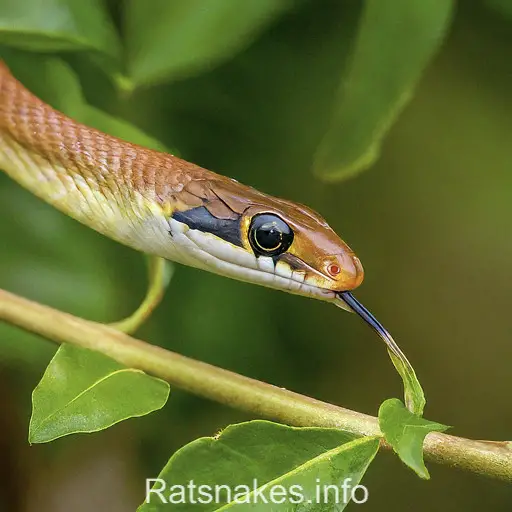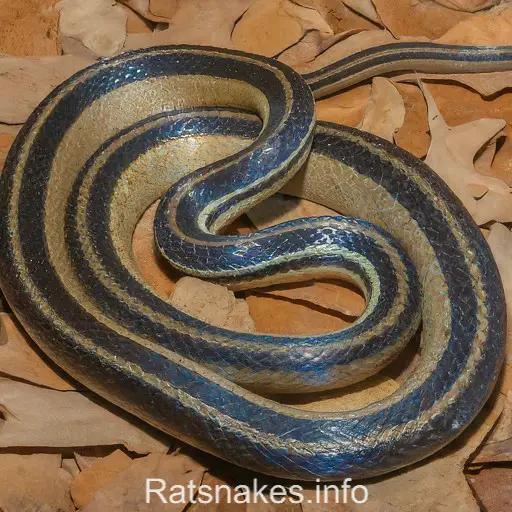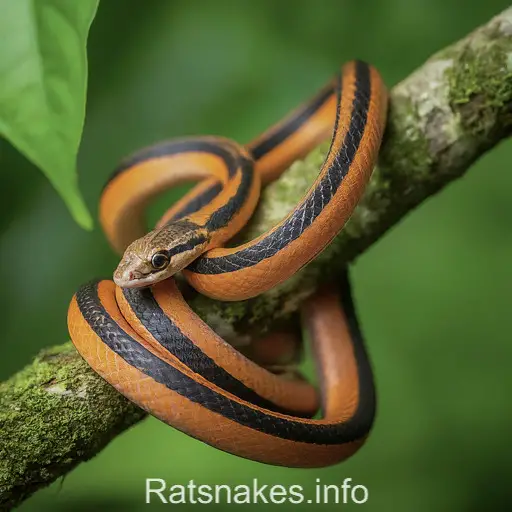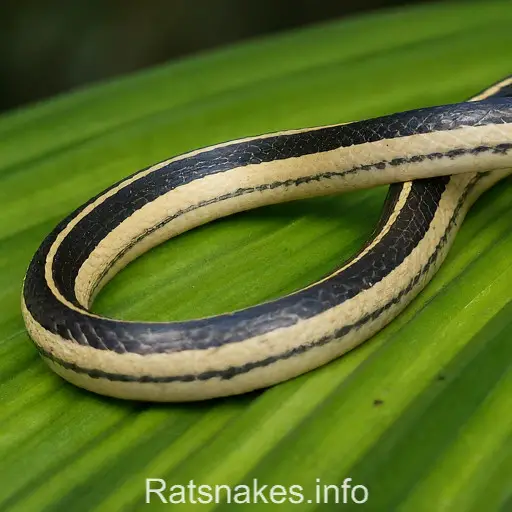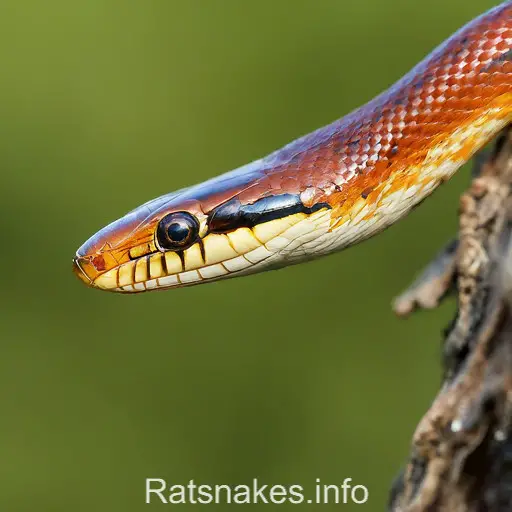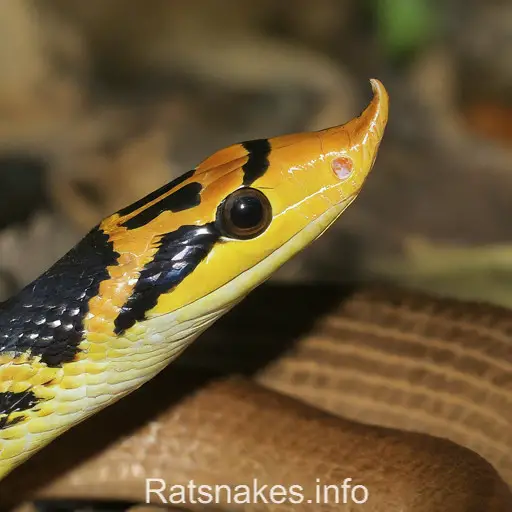
Are you ready to dive into the fascinating world of the Rhinoceros Ratsnake with us? These striking reptiles are known for their unique appearance and captivating behavior. From their distinctive horn-like scales to their agile movements, there’s so much to discover about these incredible creatures. Join us as we explore the characteristics, habitat, and importance of the Rhinoceros Ratsnake in the ecosystem.
With their vibrant colors and impressive size, Rhinoceros Ratsnakes are truly a sight to behold. Found in various regions, these snakes play a crucial role in maintaining the balance of their natural habitat. Let’s delve deeper into the world of the Rhinoceros Ratsnake and uncover the secrets that make them such an intriguing species. Get ready for an adventure as we unravel the mysteries of these remarkable reptiles.
Physical Characteristics of the Rhinoceros Ratsnake
When it comes to the physical characteristics of the Rhinoceros Ratsnake, there are some truly remarkable features that set this species apart. Here are some key points to help you visualize these fascinating snakes:
- Coloration: The Rhinoceros Ratsnake boasts a striking combination of colors, with vibrant shades of green, yellow, and black creating a mesmerizing pattern along its sleek body.
- Size: These snakes can grow to impressive lengths, with adults typically reaching between 5 to 7 feet long, showcasing their substantial presence in their natural habitat.
- Distinctive Horn-Like Scale: One of the most distinctive features of the Rhinoceros Ratsnake is the horn-like scale on the tip of its snout, which resembles a rhinoceros horn and gives the snake its unique name.
- Sleek and Agile Build: With a slender and agile body, these snakes are well-adapted to navigating their woodland and forest habitats with ease, showcasing their prowess as skilled climbers.
- Adaptations for Survival: The Rhinoceros Ratsnake’s physical characteristics are not just for show – they are essential for its survival in the wild, allowing them to hunt, evade predators, and thrive in their environment.
Distribution and Habitat
When it comes to the Rhinoceros Ratsnake, we can find this remarkable species in Southeast Asia. Specifically, you’ll encounter these snakes in countries like Vietnam, Cambodia, Laos, and Thailand. They typically reside in dense woodlands, tropical forests, and mountainous regions. Ratsnakes have adapted well to these environments, using their agility and camouflage to move swiftly through the canopy, branches, and forest floor.
In terms of elevation, Rhinoceros Ratsnakes can be spotted at heights reaching over 6,500 feet in some areas. They are truly versatile creatures, thriving in a variety of climates and terrains where they can find ample prey for sustenance. These snakes prefer areas with abundant tree cover and access to water sources, essential for their survival and hunting activities in the wild.
In the wild, these snakes are known to display both arboreal and terrestrial behaviors, adeptly navigating the trees and ground to search for food and evade potential threats. It’s fascinating to observe how the Rhinoceros Ratsnake has carved out its niche in these diverse landscapes, showcasing its adaptability and resilience in the face of changing environmental conditions.
Behavior and Diet
When it comes to behavior, Rhinoceros Ratsnakes are primarily nocturnal, exhibiting heightened activity during the night. They are known for their arboreal tendencies, often climbing trees with ease using their strong bodies. These snakes are agile hunters, preying on a variety of small mammals, birds, and eggs.
In terms of diet, Rhinoceros Ratsnakes have a carnivorous appetite, with a penchant for consuming rodents like rats and mice. They are skilled hunters, using their keen sense of smell and heat-sensing abilities to locate prey. Additionally, these snakes may also feed on lizards and insects as part of their regular diet.
Rhinoceros Ratsnakes play a crucial role in maintaining ecological balance within their habitats by controlling pest populations naturally. Their diverse diet and hunting behaviors highlight their importance in the ecosystem, contributing to the health of the surrounding environment.
Role in the Ecosystem
Rhinoceros Ratsnakes play a crucial role in their ecosystem, contributing to pest control by preying on small mammals, birds, and insects. By keeping rodent populations in check, they help maintain the natural balance within their habitats. This natural pest management is essential for the overall health of the ecosystem.
Their diverse diet, which includes rodents, lizards, and insects, showcases their adaptive nature and contribution to regulating various pest populations. Through their hunting prowess and keen senses, Rhinoceros Ratsnakes aid in reducing potential damage caused by these pests to the surrounding vegetation and smaller animal populations.
In addition to their predatory role, these snakes also serve as indicators of ecosystem health. Their presence and behavior can provide valuable insights into the overall well-being of the environment. As such, studying Rhinoceros Ratsnakes can offer clues about the vitality of the ecosystem they inhabit, aiding in conservation efforts and biodiversity monitoring.
Conservation Efforts
When it comes to Conservation Efforts for the Rhinoceros Ratsnake, various organizations and researchers are actively involved in initiatives to protect and preserve this species.
- Habitat preservation plays a critical role in safeguarding these snakes, ensuring they have ample space to thrive and reproduce.
- Anti-poaching measures are implemented to combat illegal hunting and trading of Rhinoceros Ratsnakes, helping to reduce the pressure on their population.
- Public education and awareness programs are essential in promoting coexistence between humans and these unique reptiles, fostering a better understanding of their importance in the ecosystem.
- Research and monitoring are ongoing to track population trends, assess threats, and develop strategies for long-term conservation of the species.
By combining these Conservation Efforts, we can work towards maintaining healthy populations of Rhinoceros Ratsnakes in their natural habitats, ensuring they continue to play their vital role in the ecosystem.
Key Takeaways
- Rhinoceros Ratsnakes display vibrant colors, distinctive horn-like scales, and sleek, agile bodies, essential for survival in their natural habitat.
- These snakes are found in Southeast Asia, residing in dense woodlands, tropical forests, and mountainous regions, showcasing adaptability to diverse environments.
- Rhinoceros Ratsnakes are agile nocturnal hunters with a carnivorous diet, preying on small mammals, birds, and insects, contributing to pest control in their ecosystem.
- They play a crucial role in ecosystems by aiding in pest control, serving as indicators of environmental health, and requiring conservation efforts to protect their populations.
Conclusion
Conservation efforts for Rhinoceros Ratsnakes are crucial for their survival. Through habitat preservation, anti-poaching measures, public education programs, and ongoing research, we aim to protect these unique creatures. By working together, we can ensure that Rhinoceros Ratsnakes continue to thrive in their natural environments. Let’s keep supporting these initiatives to maintain healthy populations and preserve the balance of our precious ecosystems.

